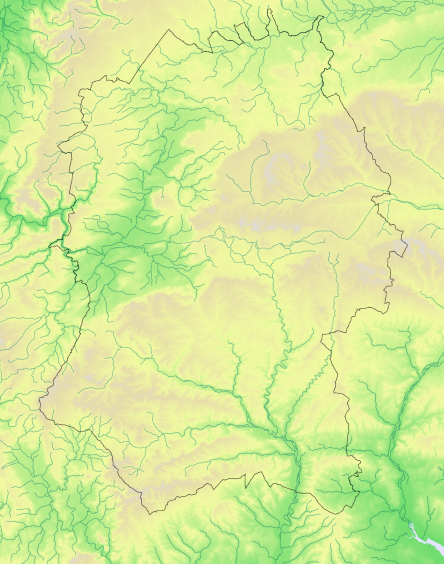Atlas species lists
- Breeding distribution 1995–2000
- Summer abundance 1995–2000
- Winter distribution 1995–2000
- Winter abundance 1995–2000
- Breeding distribution 2007–2012
- Summer abundance 2007–2012
- Winter distribution 2007–2012
- Winter abundance 2007–2012
- Breeding distribution change
- Summer abundance change
- Winter distribution change
- Winter abundance change
More Mandarin Duck maps
- Breeding distribution 1995–2000
- Summer abundance 1995–2000
- Winter distribution 1995–2000
- Winter abundance 1995–2000
- Breeding distribution 2007–2012
- Summer abundance 2007–2012
- Winter distribution 2007–2012
- Winter abundance 2007–2012
- Breeding distribution change
- Summer abundance change
- Winter distribution change
- Winter abundance change
Map explanation
This map shows the winter distribution of the species in Wiltshire as revealed by the fieldwork for Birds of Wiltshire (Wiltshire Ornithological Society 2007).
Key
Status
Nos tetrads

Present
3
1%

Not surveyed
Mandarin Ducks were introduced to Britain by gardeners as decorative additions to landscaped gardens from the mid-18th century, though only became established as a wild population in the early 20th century following releases in southern England. Since then the species has been steadily expanding its range: between the 1968-72 Breeding Atlas and the 1988-91 Breeding Atlas the national breeding season range increased by 459%, then by a further 123% between 1991 and Bird Atlas 2007- 2011.
They were first recorded in Wiltshire at three separate locations in winter 1962-3, but there were only five more records, possibly of escapes, between then and 1981. Thereafter they began to be recorded more regularly and more extensively. While the 1968-72 Breeding Atlas included no records at all from Wiltshire (the first breeding record in Wiltshire was not until 1986, at Langford Lakes), the 1988-91 Breeding Atlas had them breeding in five core squares and present in six others, Birds of Wiltshire recorded probable or confirmed breeding in 8 core squares and presence in six others and Bird Atlas 2007-2011 had probable or confirmed breeding in 17 core squares and presence in three others.
The 1981-84 Winter Atlas found them in five of Wiltshire’s core 10km squares. The winter records in Bird Atlas 2007-2011 placed them in 13 core squares and in 33 tetrads altogether.
The main strongholds of the species include Fonthill Lake, where up to 31 have been recorded, and Bowood Lake where 39 were recorded in November 2011.
References
The following references are used throughout these species accounts, in the abbreviated form given in quotation marks:
“1968-72 Breeding Atlas” – Sharrack, J.T.R. 1976: The Atlas of Breeding Birds in Britain and Ireland. T. & A. Poyser
“1981-84 Winter Atlas” – Lack, P.C. 1986: The Atlas of Wintering Birds in Britain and Ireland. T. & A. Poyser
“1988-91 Breeding Atlas” – Gibbons, D.W., Reid, J.B. & Chapman, R.A. 1993: The New Atlas of Breeding Birds in Britain and Ireland 1988-91. T. & A. Poyser
“Birds of Wiltshire” – Ferguson-Lees, I.J. et al. 2007 : Birds of Wiltshire, published by the tetrad atlas group of the Wiltshire Ornithological Society after mapping fieldwork 1995-2000. Wiltshire Ornithological Society.
“Bird Atlas 2007-2011” – Balmer, D.E., Gillings, S., Caffrey, B.J., Swann, R.L., Downie, I.S. and Fuller, R.J. 2013: Bird Atlas 2007-2011: the Breeding and Wintering Birds of Britain and Ireland
“WTA2” – ("Wiltshire Tetrad Atlas 2 ") the present electronic publication, bringing together the Wiltshire data from “Birds of Wiltshire” and “Bird Atlas 2007-11”, together with data from further fieldwork carried out in 2011 and 2012.
"Hobby" - the annual bird report of the Wiltshire Ornithological Society.

